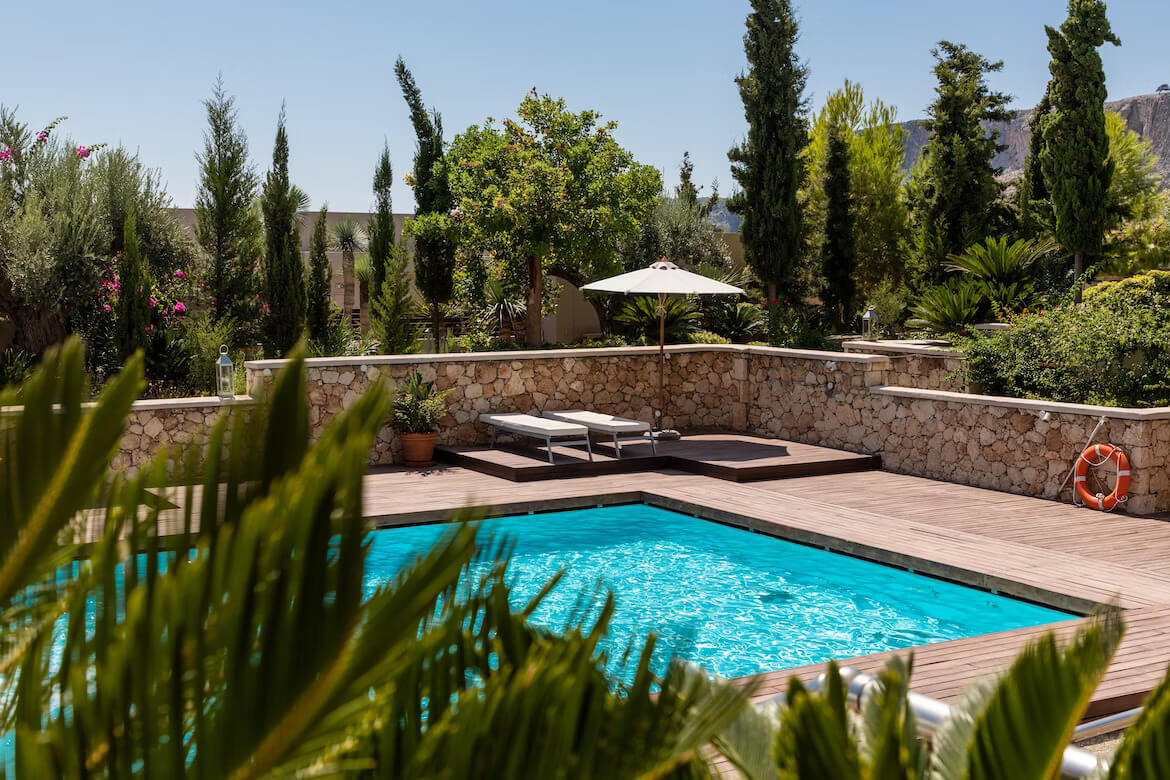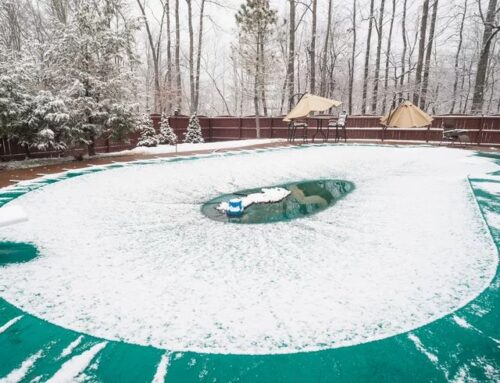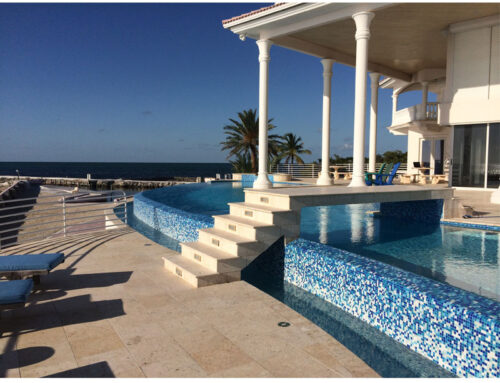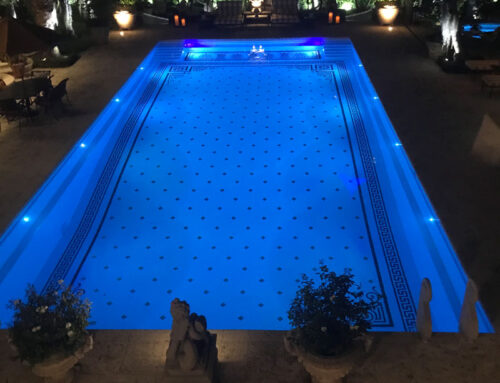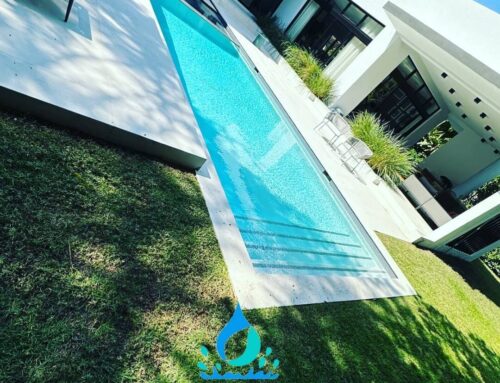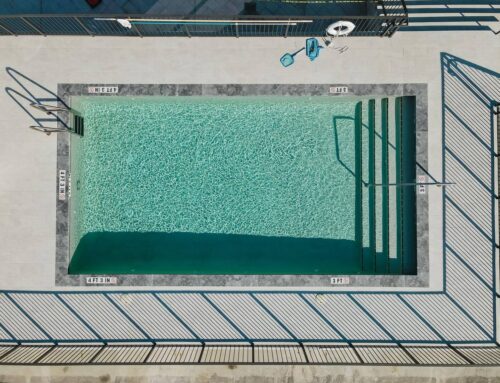In regions blessed with warm weather throughout the year, such as Florida, inground pools are gaining immense popularity. This article aims to provide you with a comprehensive understanding of inground swimming pools and their remarkable potential in transforming your backyard.
What Are the Different Materials Used for Inground Swimming Pools?
You may imagine a certain type of inground pool. However, there are many different materials that can be used to make them. Each material, from concrete to fiberglass or vinyl-lined pools, has its advantages and disadvantages. Here’s a quick overview:
Concrete
It is the most popular construction method for custom-made swimming pools, as it allows maximum flexibility in design. These pools also require less maintenance, but they do need to be maintained more often.
Fiberglass
Pre-formed fiberglass pools can be installed much faster than with other materials. The pools are non-porous and require little maintenance. They lack the design flexibility of concrete pools.
Vinyl-lined
They are incredibly flexible due to their flexible shell. Vinyl-lined swimming pools are usually more affordable but require more maintenance because of their porous surface.
REQUEST A FREE ESTIMATE NOW!
Inground Swimming Pools: Value & Visual Appeal
You can see that inground pools have many benefits. In addition to this, an inground swimming pool is a great investment for your backyard, both aesthetically and physically.
- Inground pools can increase the value of your home. Backyard features attract potential buyers and add thousands of dollars.
- Inground pools transform your backyard. Inground pools add luxury, beauty, and relaxation to the outdoor area. You’ll have no problem enjoying your backyard, whether you want to relax by the pool or spend time with family and friends.
- Inground pools are a great way to entertain. Your backyard can be transformed into the ultimate party destination with an inground pool.
- Inground pools are great for exercise. Swimming in a pool is a great way to stay active during the summer.
Inground Pool Costs
Some people who live in hot climates consider an inground swimming pool to be a necessity. This is especially true during the summer months. Some may think it’s a luxury, others might even consider it an investment. These beautiful water features add value and fun to any backyard.
Inground pools are leveled with the backyard, unlike above-ground swimming pools. Landscapers can dig and excavate the area where the pool will be installed before installing it. The pool is then placed in the hole, and the surrounding area is filled back in.
Costs of Installing an Inground Swimming Pool
Inground pools can cost anywhere from $29,800 up to $55,000. Special customizations and additional features may push the price to $65,000. According to HomeGuide, an additional hot tub will cost $6,001 to $15,001. Pool lighting will also be $700 up to $1,800.
If you want to do it yourself, then either purchase a complete package from a pool provider, which includes everything from the excavation to the decking. Turn-key packages are available for inground swimming pools between $35,000 and $100,000. If you have experience, you can save thousands by installing your pool yourself.
You will have to pay for the shell of the pool, as well as rental equipment, including a crane. Other costs include excavation, water and backfill materials, plumbing, and pool equipment. This can add up to thousands of dollars. Compare the DIY inground swimming pool installation costs with the package price.
Cost of Inground Pools by Material
What you choose to use will determine the cost of your pool installation. Vinyl costs less and concrete more, while fiberglass inground pools are in the middle.
Concrete
Concrete and gunite pool prices reflect their beauty, which is reflected in the price. There is no way to reduce the cost of a concrete pool or gunite by DIYing. Turnkey concrete or gunite pools are priced between $50,000 and $100,000.
The cement pools are larger than pools made of other materials and require more electricity and chemicals to maintain. Every three to five years, they also need an acid wash in order to remove mold and algae.
You may need to replaster your concrete pool or gunite after multiple acid washes. The washes remove the layers. Over the course of a decade, concrete pool owners will spend an average of $27,500 on maintenance.
Vinyl
Inground vinyl pools are a great option for those on a budget. Vinyl inground pools can be built by yourself for a relatively low price, about $28,000.
Vinyl pools have lower initial costs, but inground pool buyers should also take into account long-term costs. The average cost of maintaining a vinyl swimming pool over a period of 10 years is $13,300.
Vinyl surfaces are easier to clean, so they require less maintenance. Vinyl surfaces don’t have as much algae, so they require less cleaning chemicals. You can do the cleaning yourself when necessary.
Fiberglass
HomeGuide reports that the average price of fiberglass pools hovers around $46,000. The total cost of a fiberglass pool can range from $28,000 if you choose to DIY or install it yourself, up to $50,000 if you opt for an inground turn-key pool.
Over a period of 10 years, the cost to maintain a fiberglass pool will range between $5,000 and $15,000. Fiberglass pools require less maintenance than other types of pools, and their smooth surfaces prevent algae growth.
Tips to Save on Inground Pool Installation Costs
Installation of an inground pool can be expensive. But that doesn’t stop you from dreaming about owning a pool. You can save money on inground pool installations by following these tips:
- Get several quotes: By doing your research, and getting quotes from multiple companies that install inground pools, you can save money.
- Select a simple design: A simple design for an inground pool can save you money. Remember that the more features added, the higher the cost of installation.
- Take into consideration the type of pool: Fiberglass pools tend to be less expensive than pools with vinyl liners or concrete. They may also have a limited range of design options and a shorter life span.
- Consider the long-term cost of an inground swimming pool: Regular maintenance, energy consumption, insurance and possible impact on resale are all factors to consider.
- Choose a smaller pool size: The larger the pool you want, the more expensive it will be to build. You can save money on installation by choosing a smaller pool.
- Installing a pool yourself can be a cost-effective option if you are familiar with the construction process. Pool installation is a unique process that requires specialized knowledge and equipment.
- Maintenance of your pool: Regular maintenance will save you money and extend the life of your pool.
Contact Our Pool Experts for Inground Pool Installation in South Florida
Our team of skilled professionals at Florida Pool Patio will guide you through every step of the inground pool installation process, ensuring seamless execution and exceptional craftsmanship. With our extensive experience and commitment to customer satisfaction, we are dedicated to turning your backyard into a breathtaking retreat that will be the envy of your neighbors.
From the initial design consultation to the final touches, we pay meticulous attention to detail, incorporating your unique preferences and style into the pool’s features and aesthetics. Whether you desire a serene oasis for relaxation or a vibrant entertainment hub, our pool experts have the expertise to bring your vision to life.
Contact Florida Pool Patio today and embark on a journey towards creating the ultimate outdoor paradise!
Services We Offer:

